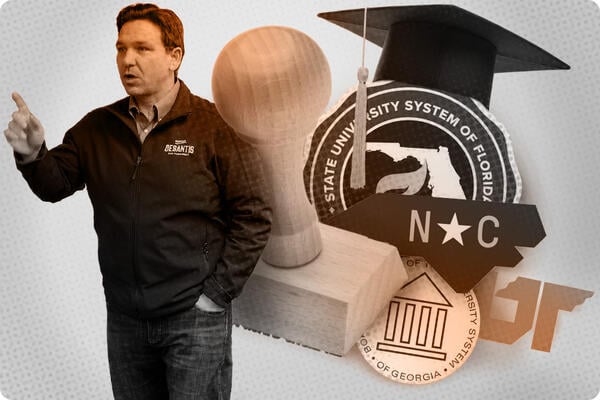The researchers aimed to show demographic changes across the entire “admissions pipeline.”
skynesher/E+/Getty Images
In the wake of the Supreme Court’s 2023 decision to ban affirmative action in college admissions, no one knew exactly what the impact on Black and Hispanic enrollment might be going forward. In fall 2024, the numbers varied substantially by institution; Inside Higher Ed’s analysis of 31 institutions’ enrollment data showed massive drops in Black and Hispanic enrollment at some institutions and less drastic decreases—and even slight increases—at others.
But enrollment data only tells part of the story. A new report from the Urban Institute, which uses data from 18 colleges and universities, highlights how the demographics of college applicants—and admits—shifted after the court’s decision in Students for Fair Admissions v. Harvard and the University of North Carolina at Chapel Hill. While the share of applicants who were Black or Hispanic increased from fall 2023 to fall 2024—by 0.47 and 0.65 percentage points, respectively—the portion who were admitted decreased.
It marked the first time since at least 2018 that the share of admitted students who were Black had declined; Hispanic students hadn’t seen a drop since 2021, when the share of applicants also declined. White students’ share of applicants, admitted students and enrolled students has shrunk every year since 2018, a trend consistent with the declining number of white high school graduates (and of white Americans in general). White graduates are also the only group that consistently make up a larger percentage of admitted students than applicants.
Jason Cohn, a higher education and workforce research associate for the Urban Institute and one of the report’s authors, said that these numbers shed more light on the impacts of affirmative action than enrollment figures alone.
“We’ve seen a lot of enrollment numbers in news articles here and there since last fall. In some cases, they stay the same; in some cases, they change. But I think what these data are showing is that that’s not fully reflective of what might actually be happening,” he said. “One of the big takeaways for me is just how much can be hidden if you only look at the enrollment numbers and aren’t seeing what’s happening in the rest of the admissions pipeline.”
For this study, the researchers partnered with two organizations, the Association of Undergraduate Education at Research Universities and the University of Southern California’s Center for Enrollment Research, Policy and Practice, to solicit data from a diverse group of 18 research universities (which they did not name). Although the sample is small, they said, it’s consistent with similar research conducted by the College Board, whose sample included about 60 institutions, indicating that the data is likely reflective of broader trends.
It’s difficult to say definitively that the Supreme Court’s decision caused the decline in the share of admitted students from underrepresented backgrounds. That same class of high school seniors faced other barriers, including the lingering effects of the COVID-19 pandemic and delays and errors with the Free Application for Federal Student Aid. Bryan J. Cook, another author of the report and the Urban Institute’s director of higher education policy, noted that colleges in some states had begun rolling back diversity, equity and inclusion efforts at that time, including some programs aimed at recruiting students of color.
“In this particular analysis, we’re not looking to isolate causation, but I think as we continue to look at this type of thing in future years, I think that’ll help us get a little closer,” Cohn said.
But Robert Massa, a veteran enrollment professional, said he believes the shifts were likely caused in large part by the end of affirmative action.
“I’m not at all surprised that Black students have increased their representation in the applicant pool and decreased their representation in the accepted pool, because universities are taking careful steps to make sure they don’t use race in and of itself as criteria in the admissions process,” he said.
(Edward Blum, the president of SFFA, the anti–affirmative action nonprofit that was the plaintiff in the Supreme Court case, told Inside Higher Ed in an email that the organization has no opinion on the study.)
The researchers plan to dig deeper into the data, analyzing other demographic information, including gender and family income, as well as academic variables such as the standardized test scores and grade point averages of the applicants and admitted students at these institutions.
One possible hiccup for future research: The report also showed that post-SFFA, the share of applicants who chose not to identify their race increased, from 3.2 percent in 2023 to 5.1 percent in 2024. If that upward trend continues, Cohn said, it might make it “more difficult, over time, to unpack these trends and see who’s being served by the higher education system.”










